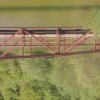81 search results - page 6 / 17 » The depth discontinuity occlusion camera |
CVPR
2010
IEEE
14 years 27 days ago
2010
IEEE
This paper presents a novel mixture-of-experts framework for pedestrian classification with partial occlusion handling. The framework involves a set of component-based expert clas...
ICCV
2007
IEEE
14 years 10 months ago
2007
IEEE
Occlusion is a significant challenge for many tracking algorithms. Most current methods can track through transient occlusion, but cannot handle significant extended occlusion whe...
ACCV
2007
Springer
14 years 2 months ago
2007
Springer
Depth from defocus (DFD) is a 3D recovery method based on estimating the amount of defocus induced by finite lens apertures. Given two images with different camera settings, the ...
CRV
2005
IEEE
14 years 2 months ago
2005
IEEE
This paper proposes a novel method for estimating depth from a long image sequence captured by a moving camera. Our idea for estimating a depth map is very simple; only counting i...
ICIP
2003
IEEE
14 years 10 months ago
2003
IEEE
Epipolar image analysis is a robust method for 3D scene depth reconstruction that uses all available views of an image sequence simultaneously. It is restricted to horizontal, lin...

